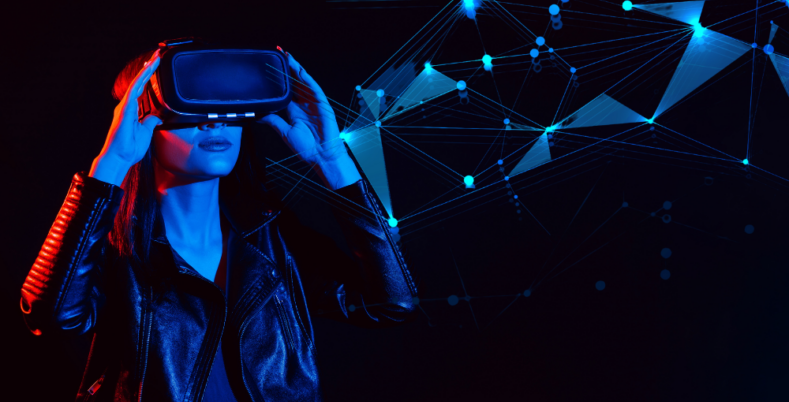Augmented Reality (AR) is a technology that adds computer generated information to the physical world around us. To create such collaborative experience AR uses apps, hardware, and software. Users are able to experience the real world and the digital world at once. This blog will examine important definitions, actual instances in the real world, and useful applications of AR.
Key Definitions
Understanding the key concepts regarding Augmented Reality (AR) is necessary to understand its importance, impact and functionality. Below are essential definitions to know AR and its related technologies:
Augmented Reality (AR): AR is a technology that adds computer-made images, sounds, or other information over what we see in the real world. People can use gadgets such as AR glasses, tablets, smartphones or other devices, to experience AR.
As per the published report, the Augmented Reality and Virtual reality market is anticipated to grow at USD 96.32 billion with CAGR of 34.2% by the year 2029.
Mixed Reality (MR): In Mixed reality, both the virtual and physical world coexist that allows simultaneous presence and interaction of real-world and digital objects. AR enhances the physical world by adding digital components, while MR uses complex components.
Virtual Reality (VR): VR offers an immersive digital environment that replaces the physical world. Users interact with virtual reality through headsets and controllers, merge themselves in a completely artificial world.
Computer Vision: This is a computer science branch that makes computers analyze and understand visual data in their surroundings. Assisting devices in recognizing and tracking objects in the real world, which is extremely important for AR.
Real World examples of Augmented Reality
- Pokemon GO: It is a popular AR game that lets the user catch virtual Pokémon that can be found in real-world environments. By using their mobile device, players can spot Pokémons around their locations and hence encourage them to explore more of the environment.
- IKEA Place: This app allows users to see how furniture will appear in their homes before they buy it. Using AR, consumers are able to project 3D models of furniture into their home in order to be better informed.
- Google Lens: This app utilizes augmented reality to deliver information about real-world objects. Users can use their smartphone cameras to identify plants or other objects and receive care tips with Google Lens.
- Snapchat Filters: Snapchat made AR popular by introducing their face filters. By using this application users are able to add interesting effects, graphics, and animations instantly on their face while enhancing the appeal of photos and videos.
- Microsoft HoloLens: Users can work with holograms in the real world. It is used in fields such as healthcare, education, and manufacturing sectors for the purpose of training and cooperation.
Practical uses of Augmented Reality
Education
By offering engaging learning opportunities, AR can change Education. For example, during class, students can visualize the solar system by showing 3D models of planets. This practical approach will improve learning, and it will be easy for students to understand and memorize difficult topics.
Healthcare
In the healthcare field, augmented reality (AR) can help surgeons during surgeries by overlaying important information within the line of sight, including patient vital signs and anatomical charts. The app can bring better outcomes and precision into surgical operations.
Retail
Retailers use AR to improve the shopping experience. Through AR applications, a customer can try on clothes or experiment with makeup products. This makes the customer happier and decreases the rate of returns.
Real Estate
AR has the potential to transform the real estate sector through enabling prospective buyers to experience virtual property tours. They have the ability to imagine the appearance of a space with various furniture layouts or renovations, simplifying the decision-making process.
Tourism
Tourism companies employ augmented reality to offer more interactive information about historical sites and landmarks. Using their phones, travelers can get the details of such as history, importance, and other stories related to that place, this provides an enhanced experience of travel.
Gaming
In gaming AR improves the quality of experience. Pokemon GO and Harry Potter are some examples of how these games inspire the player to interact with virtual characters and objects while learning their surroundings.
Summary
Augmented reality is a powerful technology that improves how we engage with the environment. AR has allowed people to experience a new kind of interaction and education with the process of overlaying digital content in the real world. AR has several practical uses ranging from gaming, education and health care to other industries and sectors. With all the technological advancements underway, it is easy to predict that AR will play an important part in human life. If you are a gamer, student, or professional, AR provides thrilling opportunities that are only starting to be discovered.
Discover the latest technologies at Knowledge Nile!
Also Read:
Augmented Reality and Digital Marketing: The Way Forward
Top 8 Augmented Reality Apps for Healthcare





